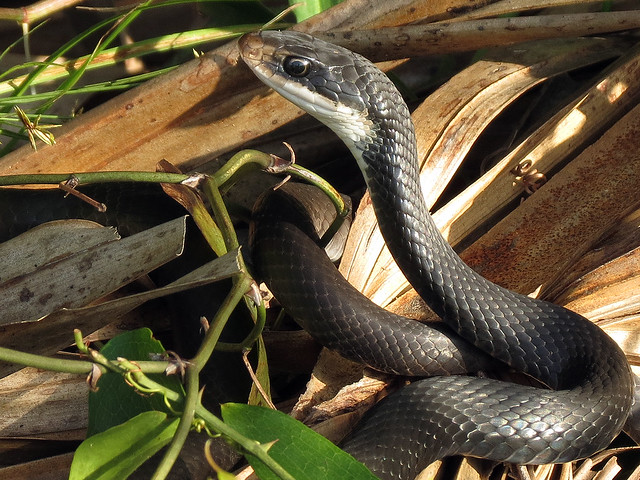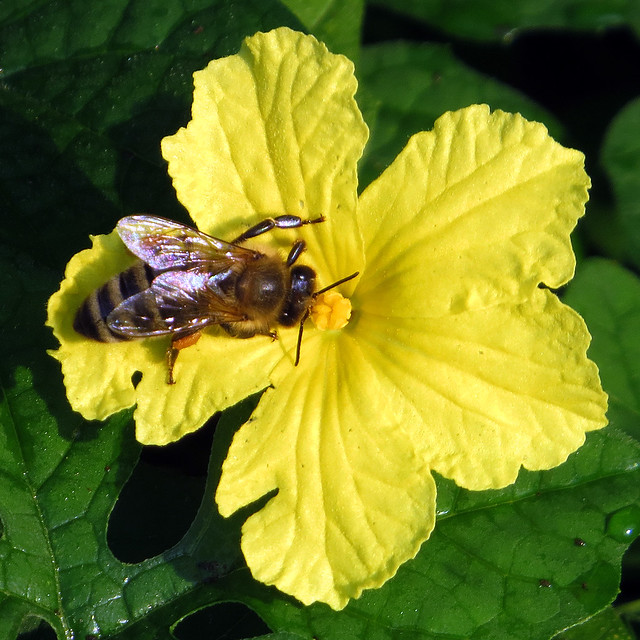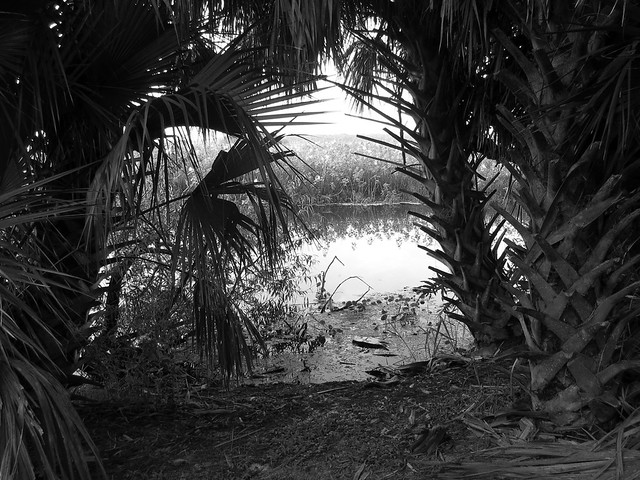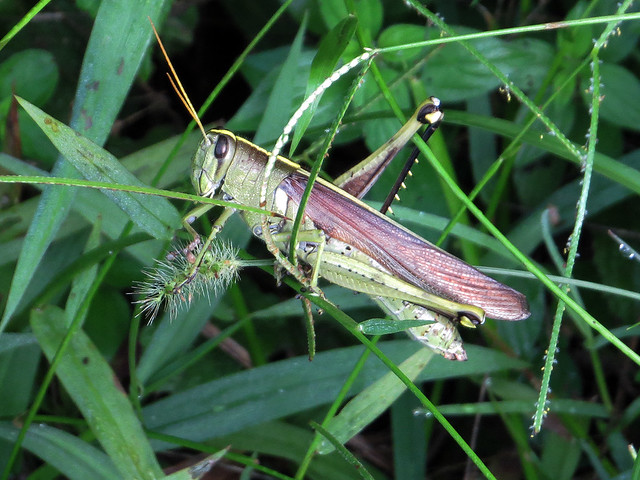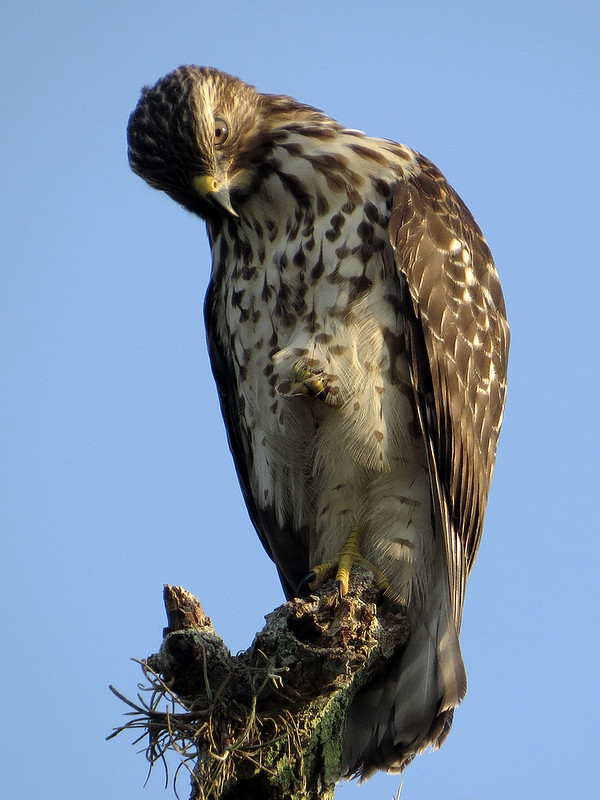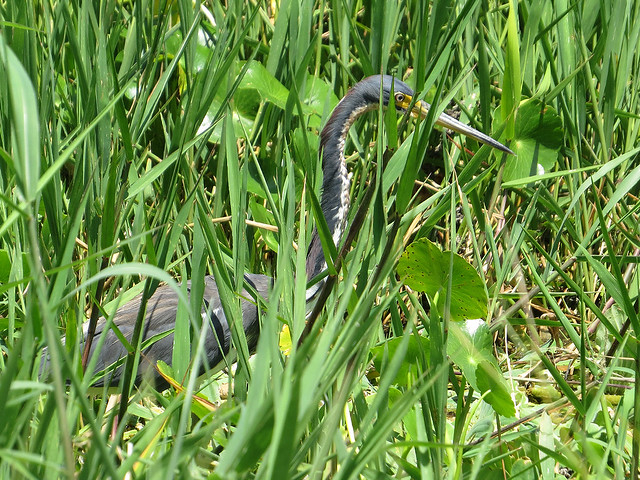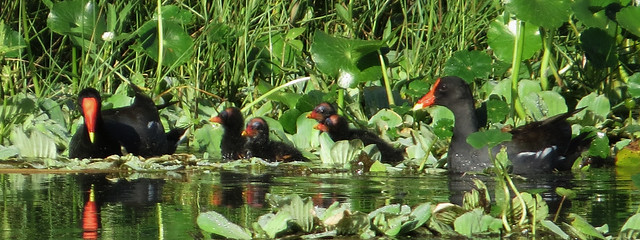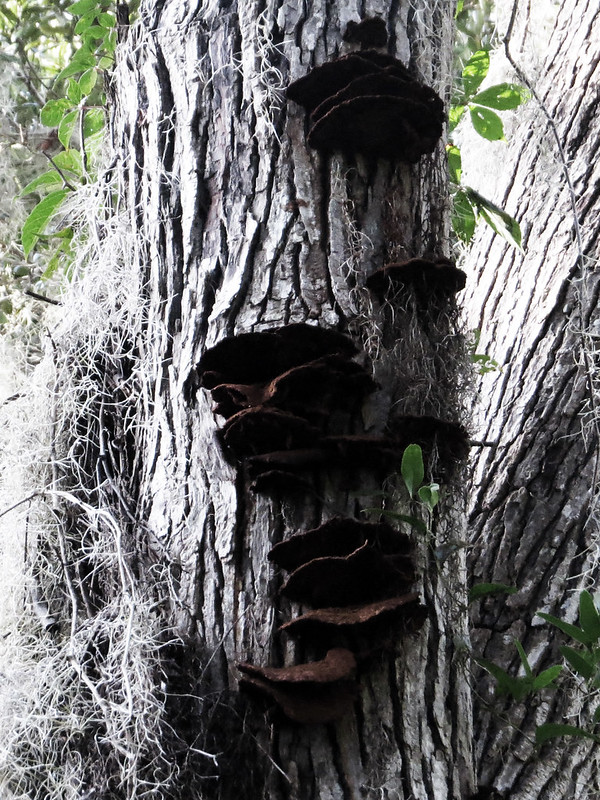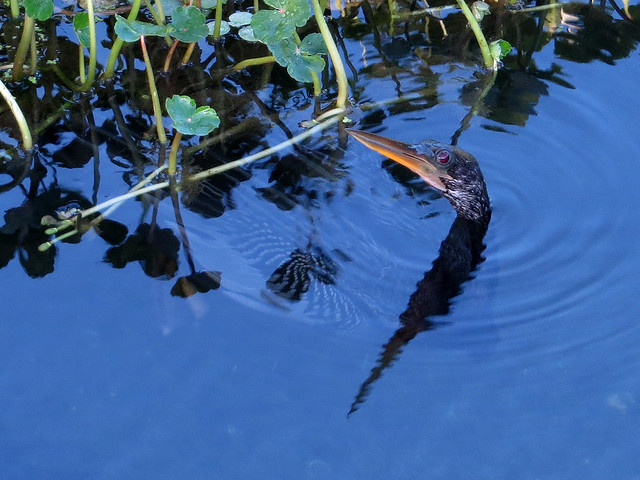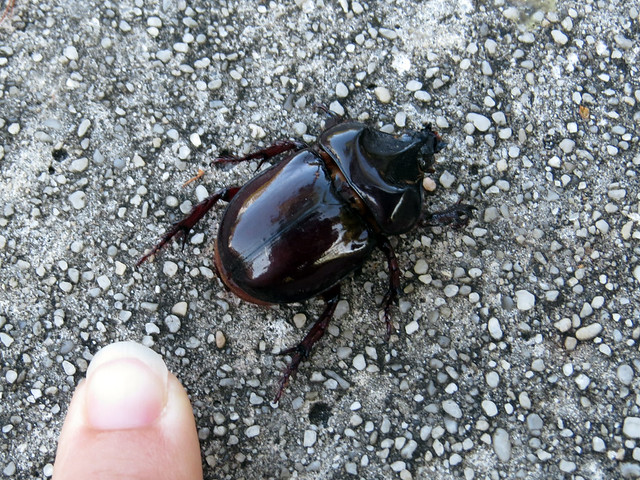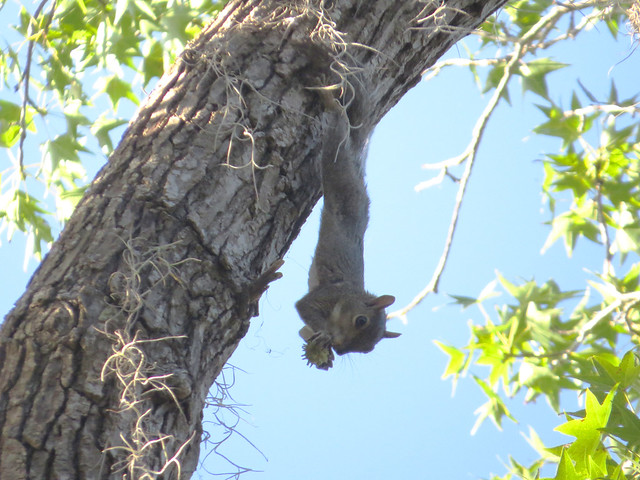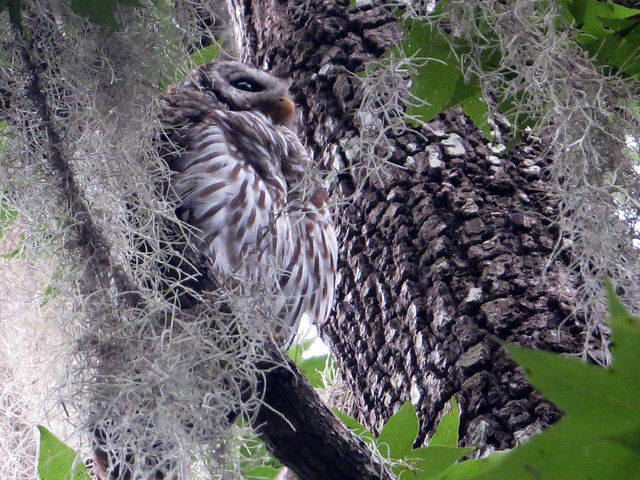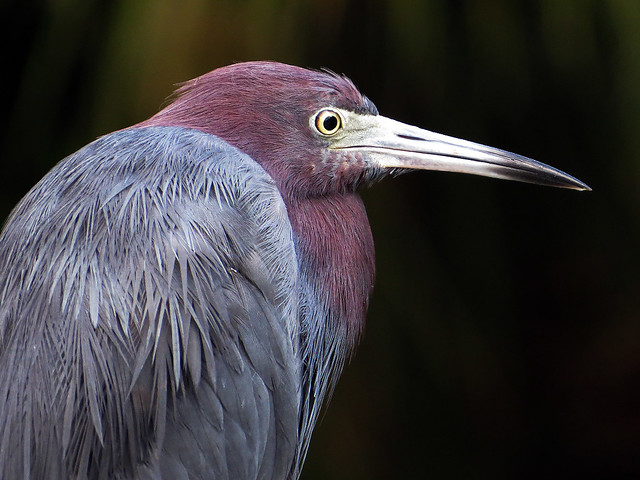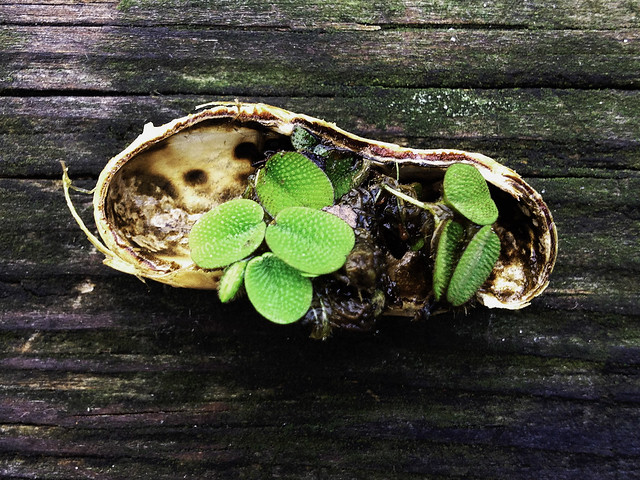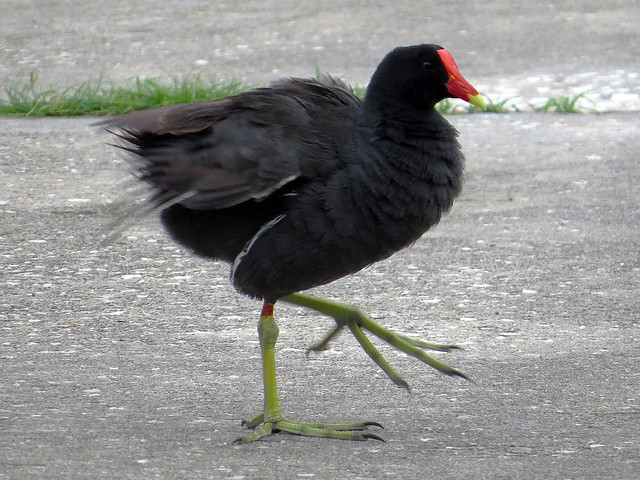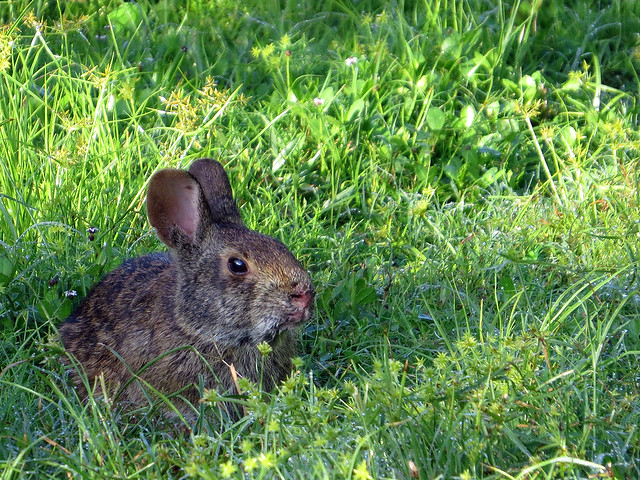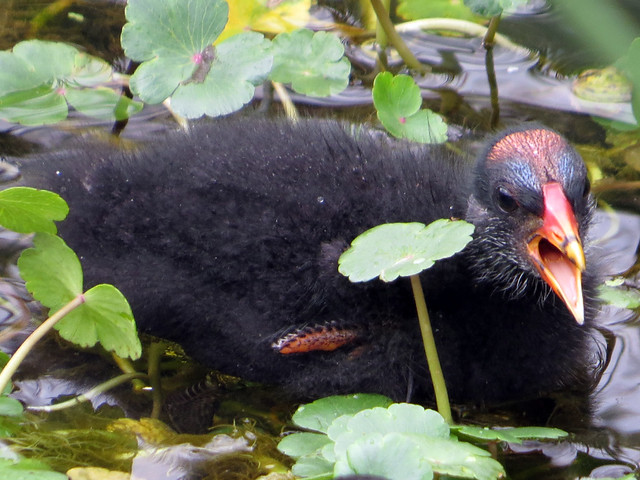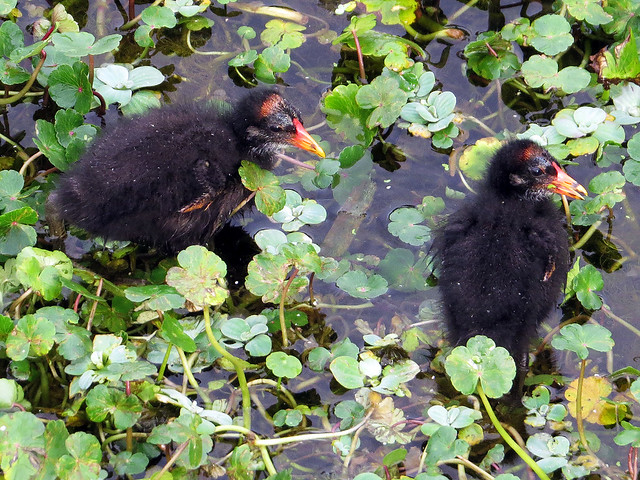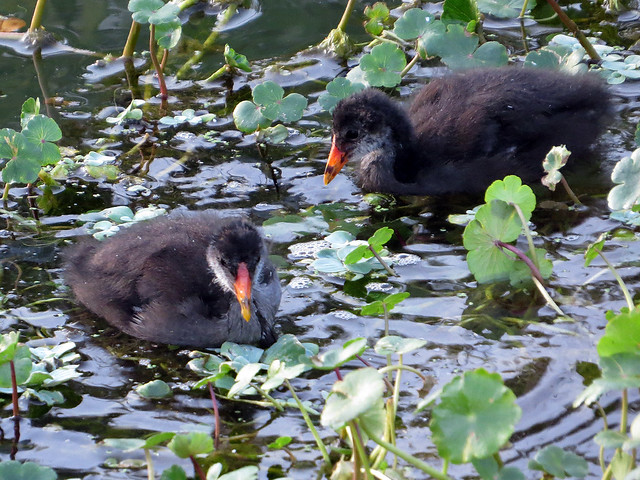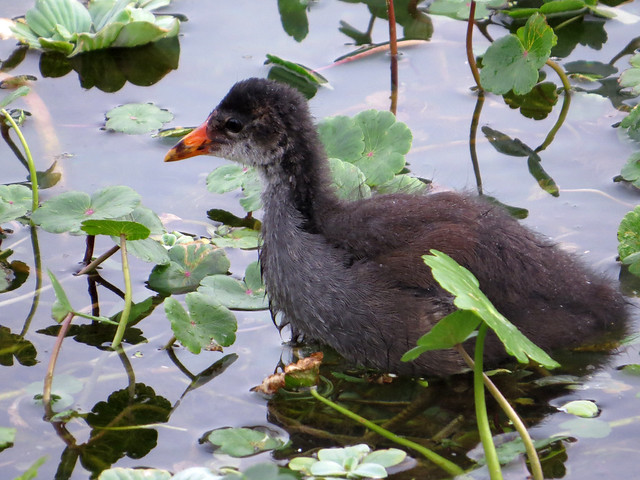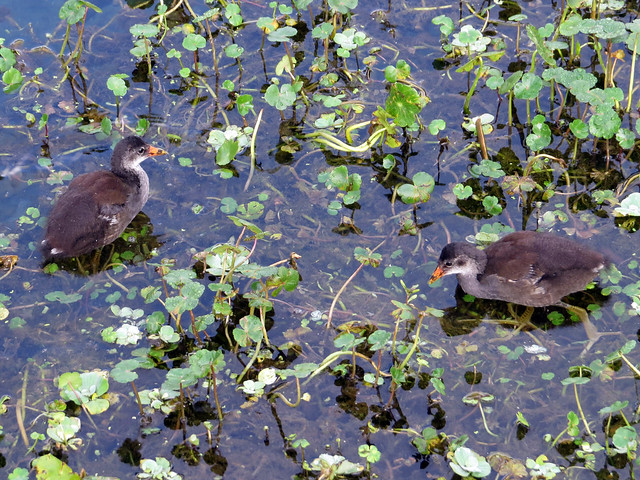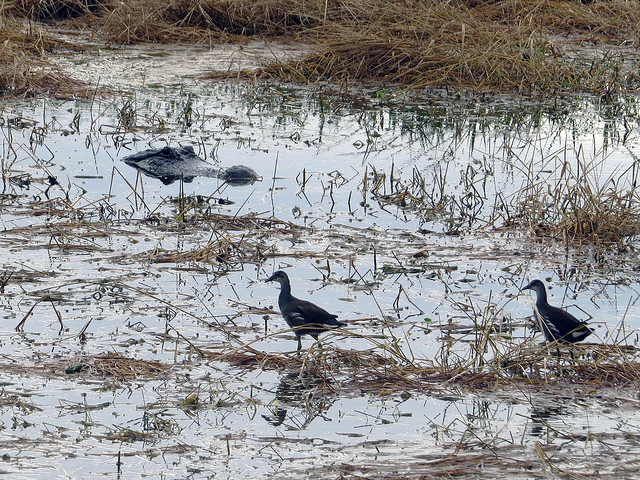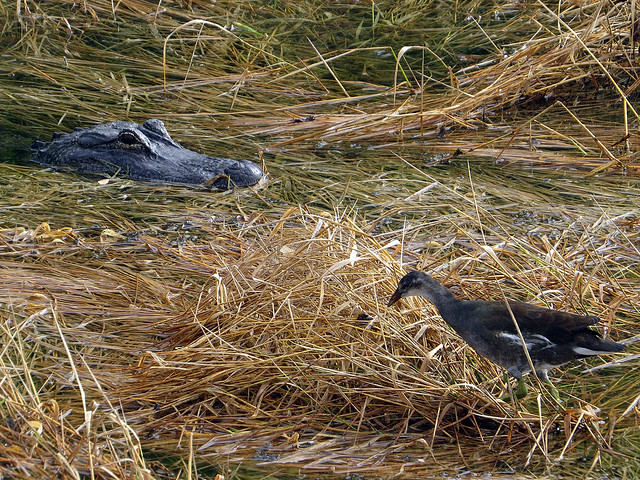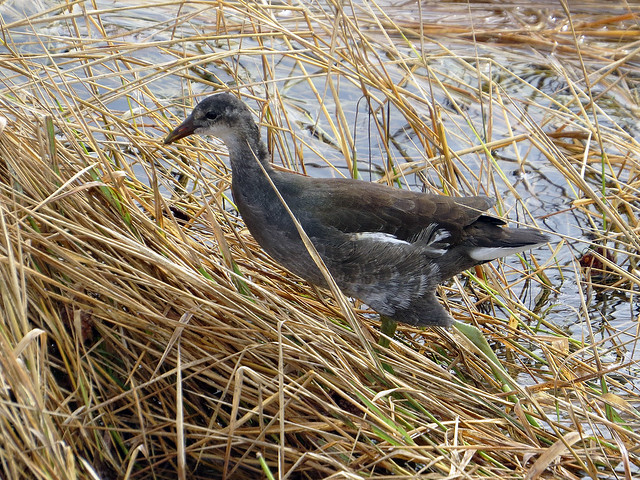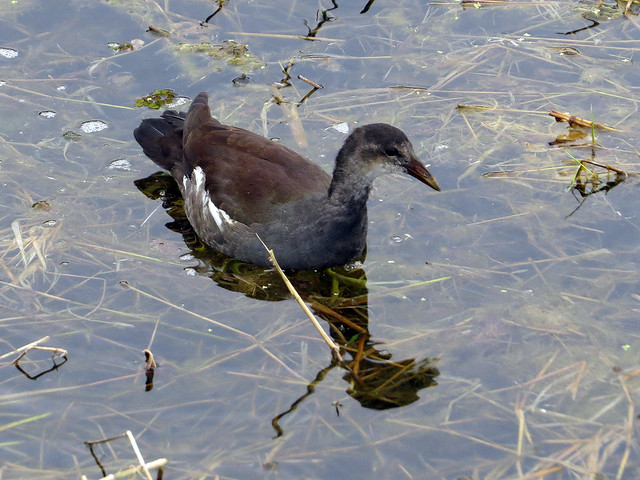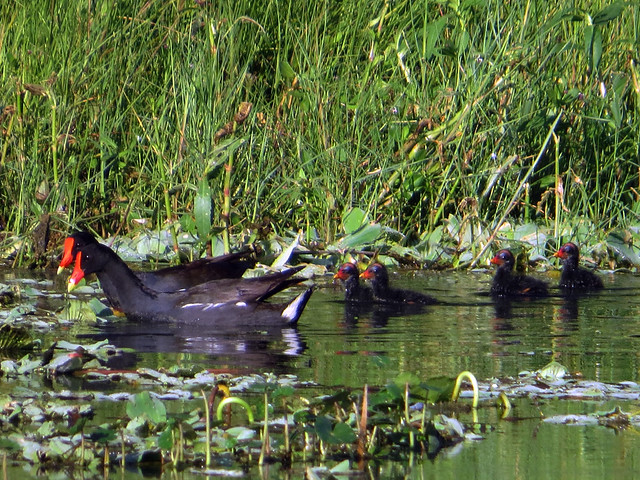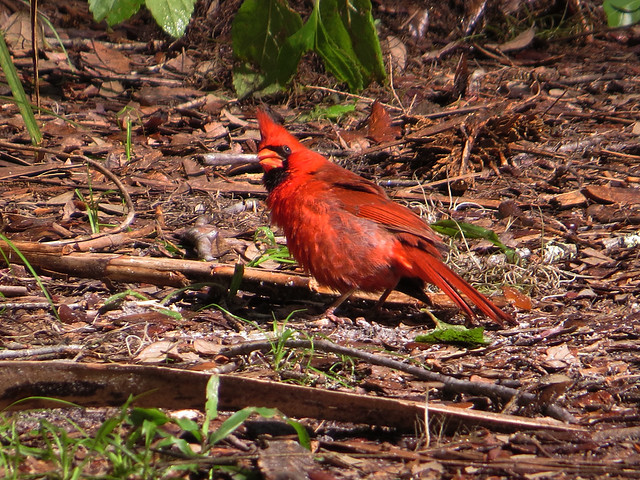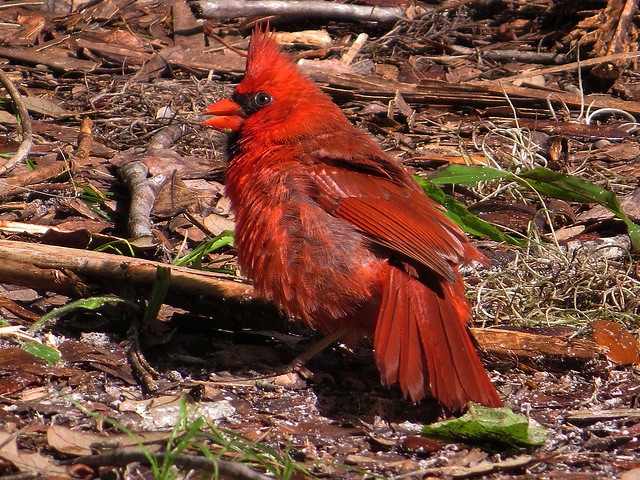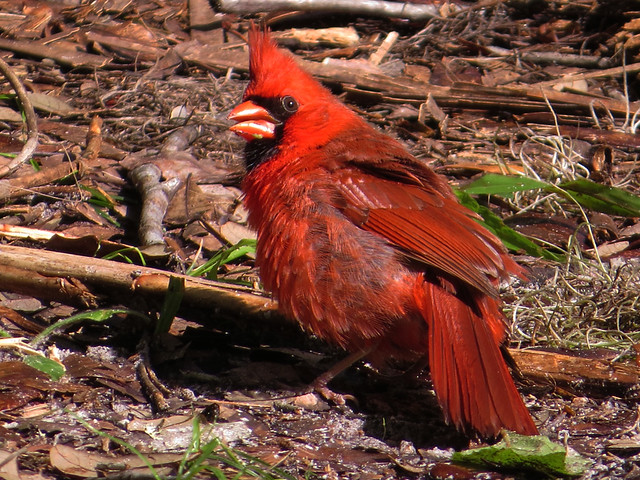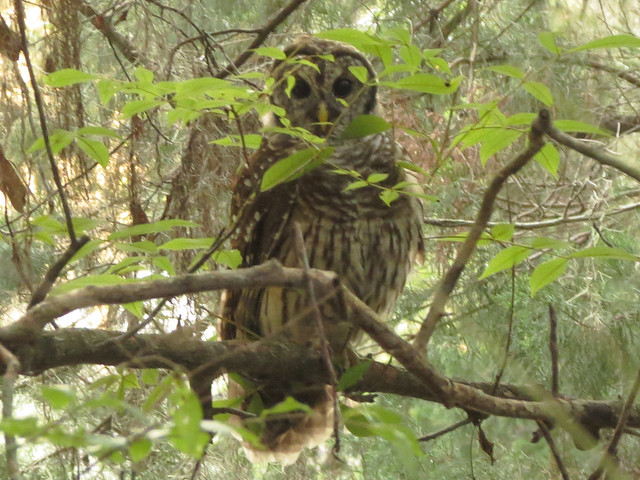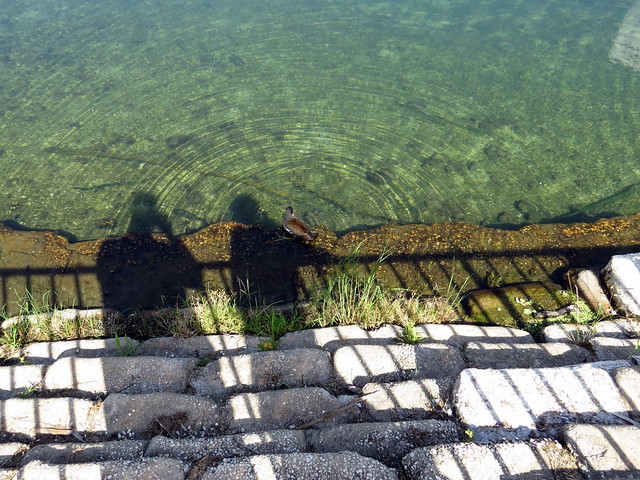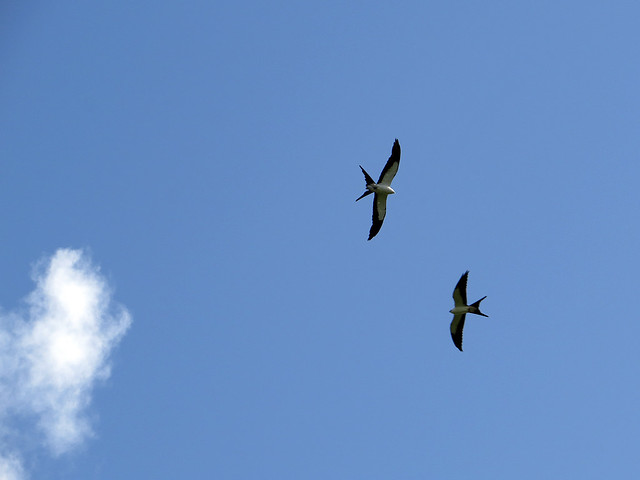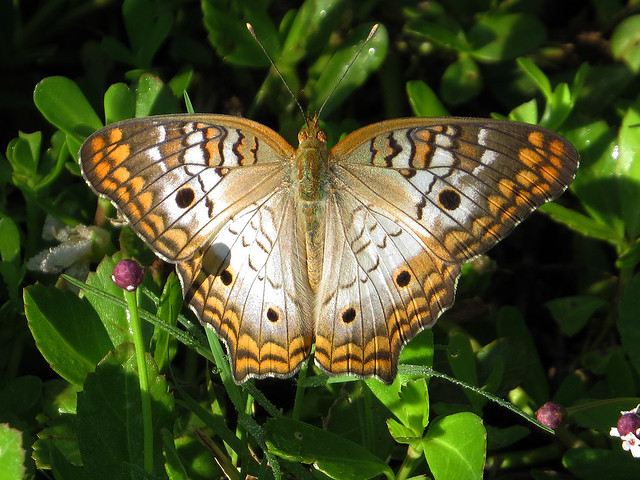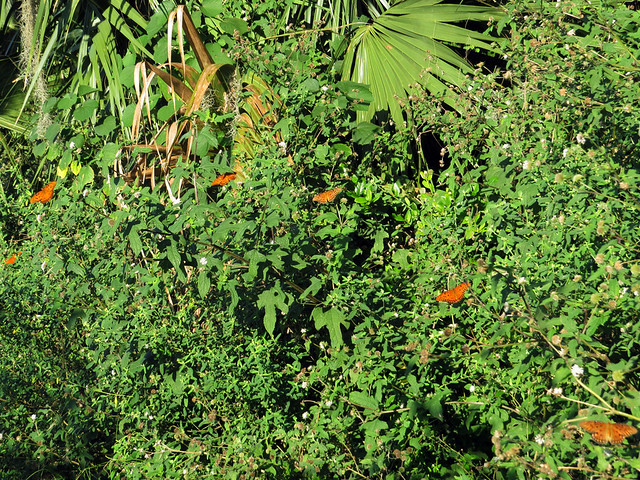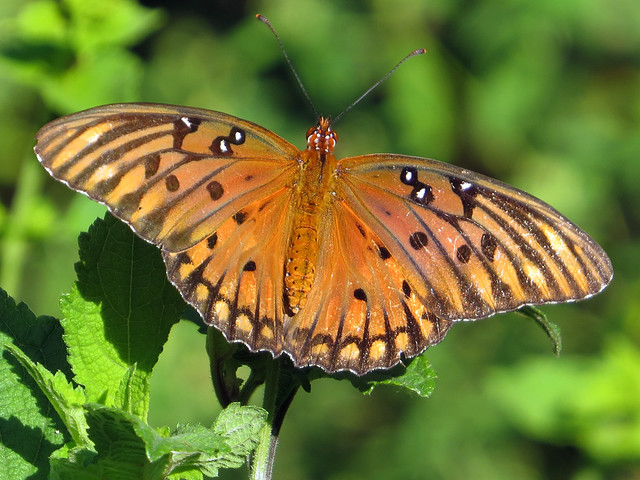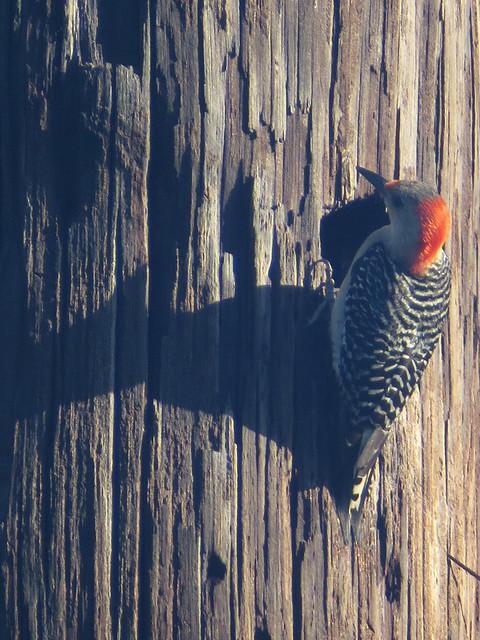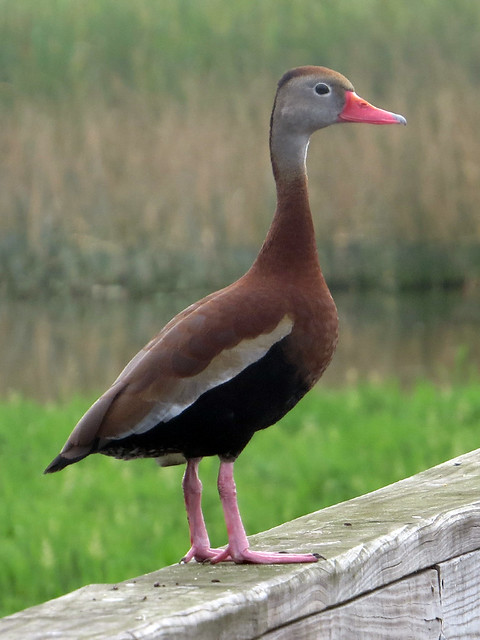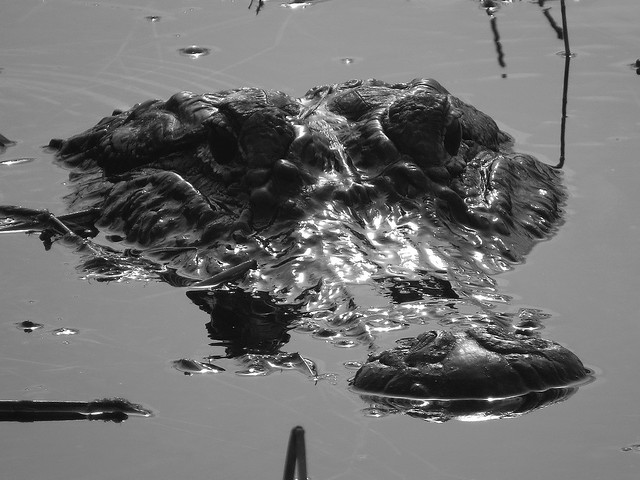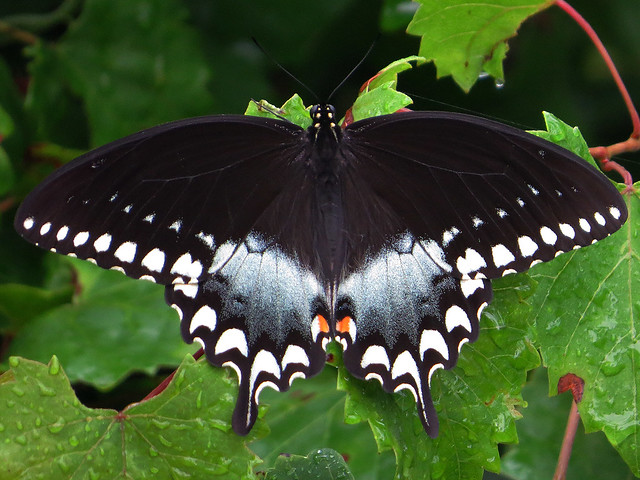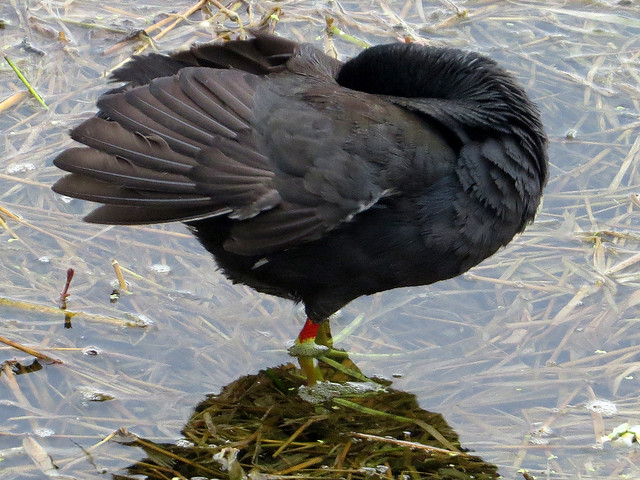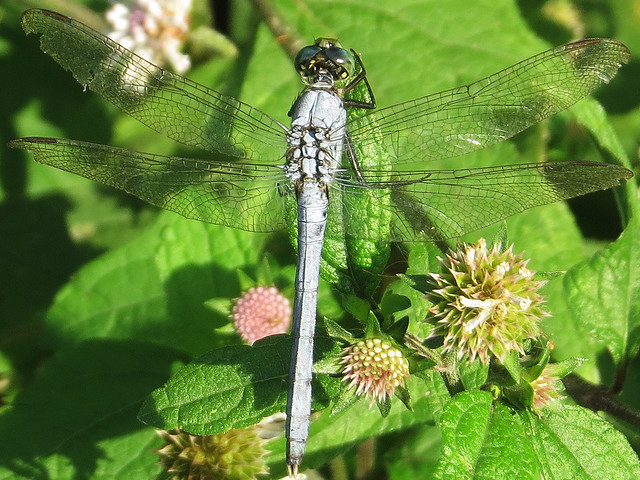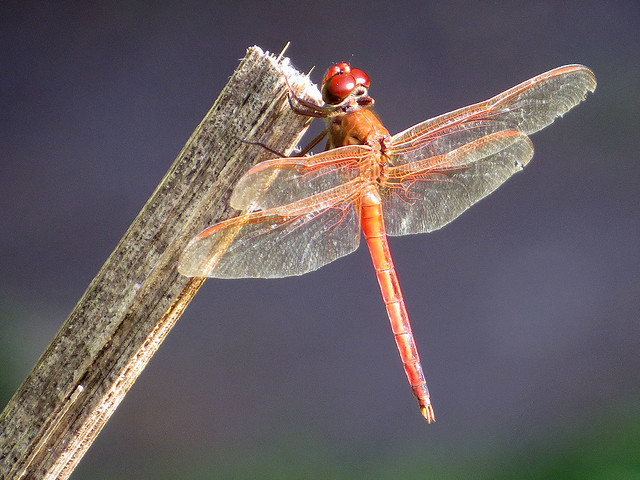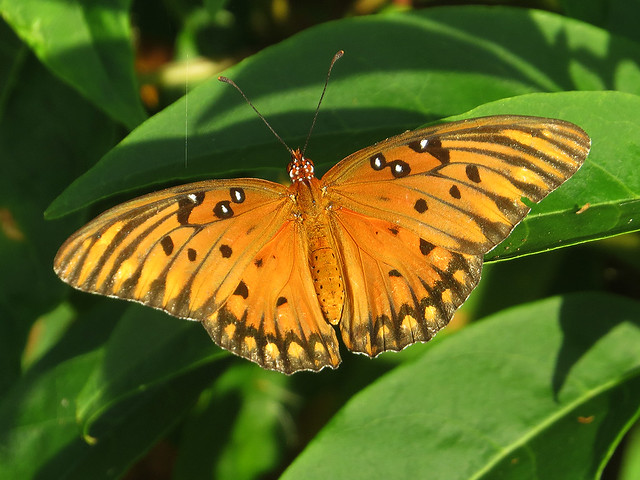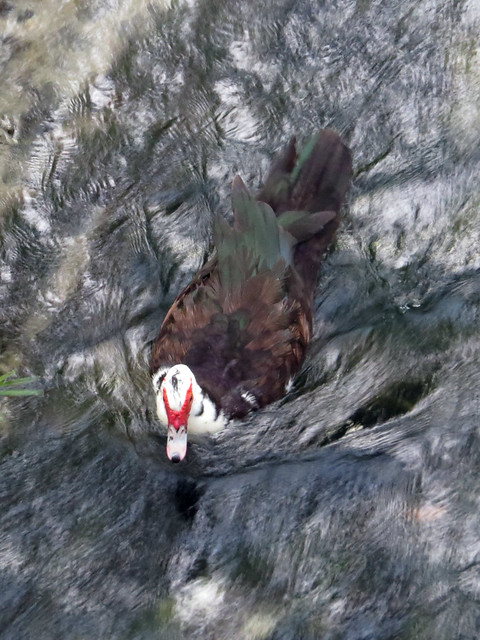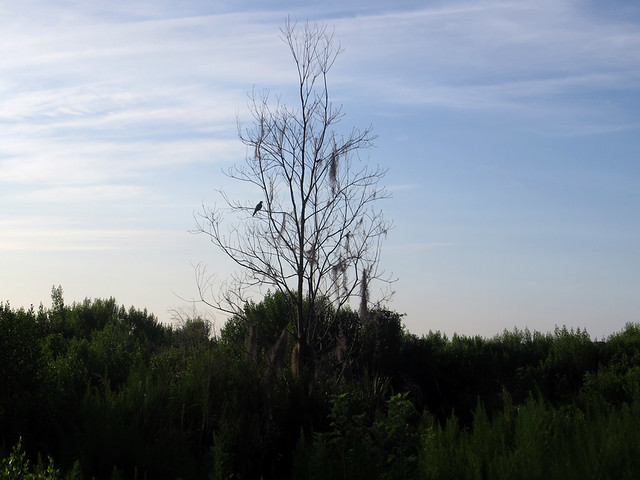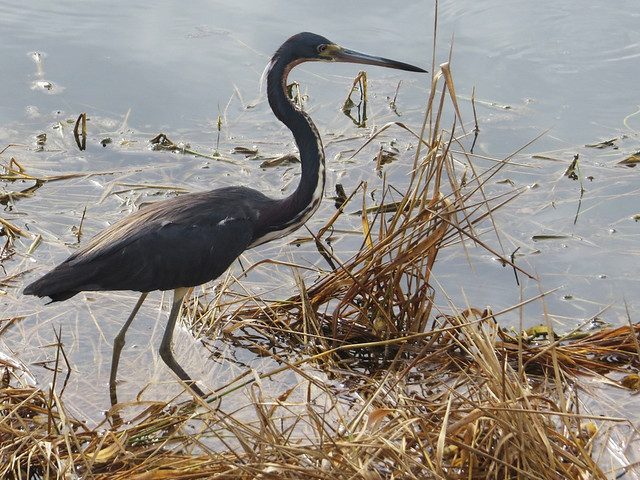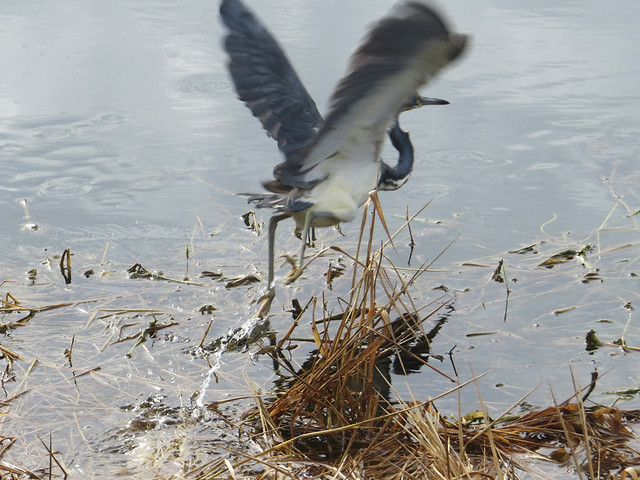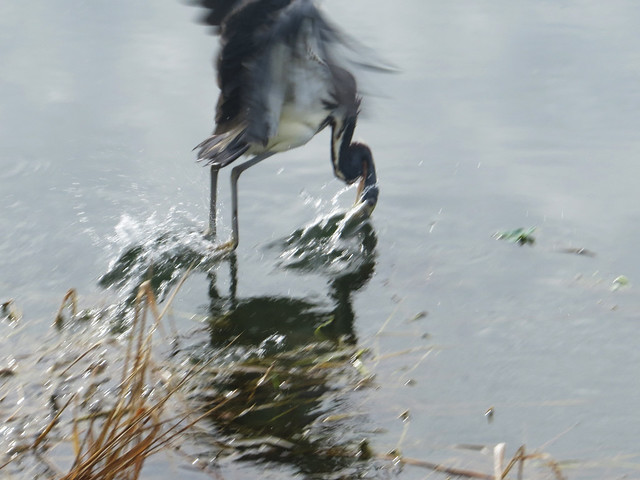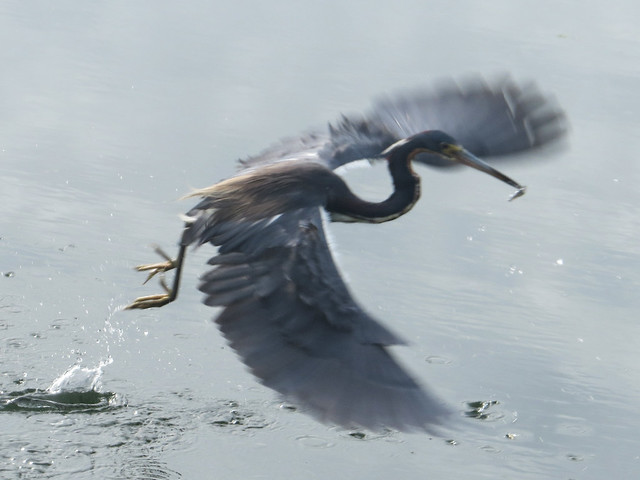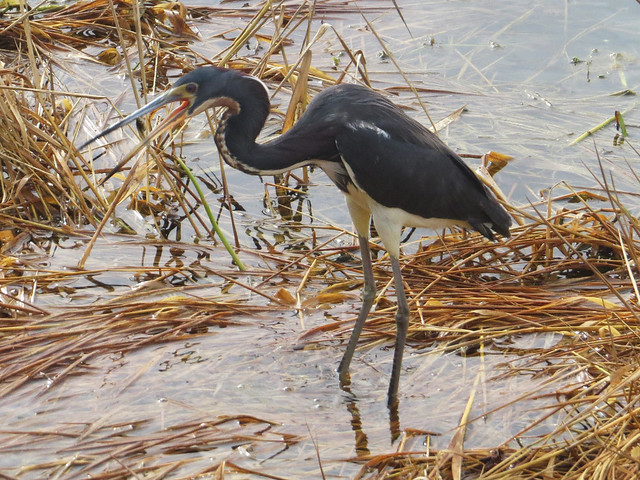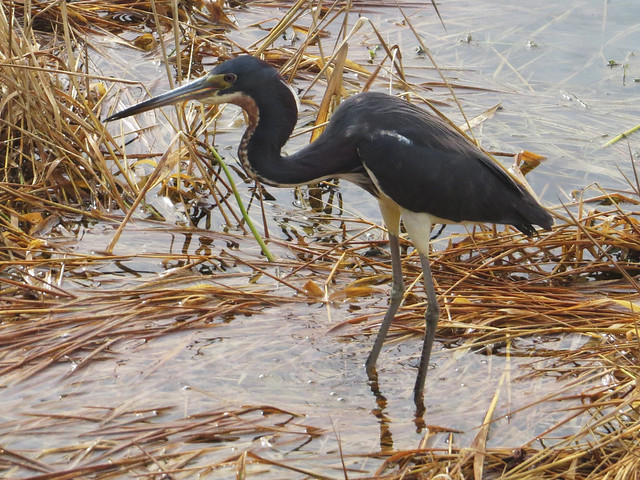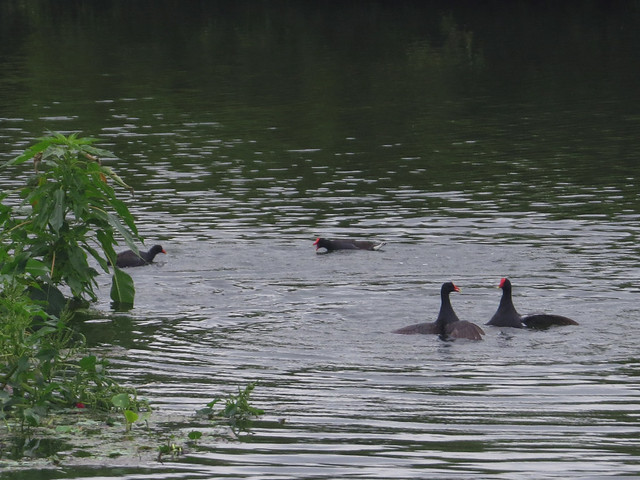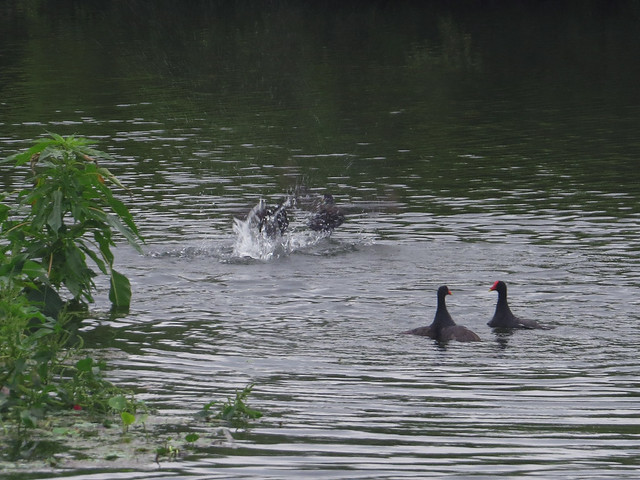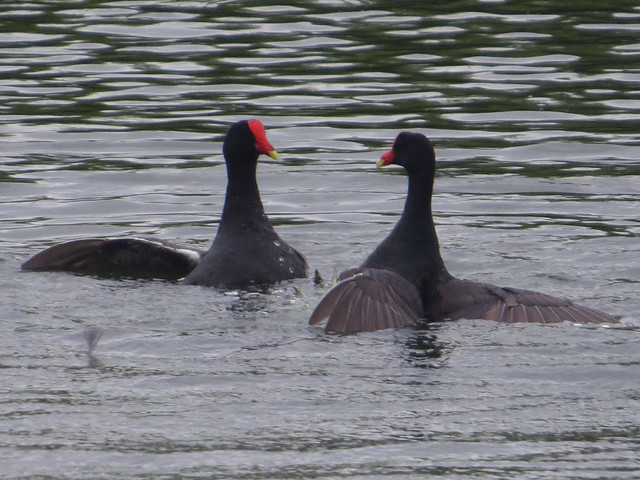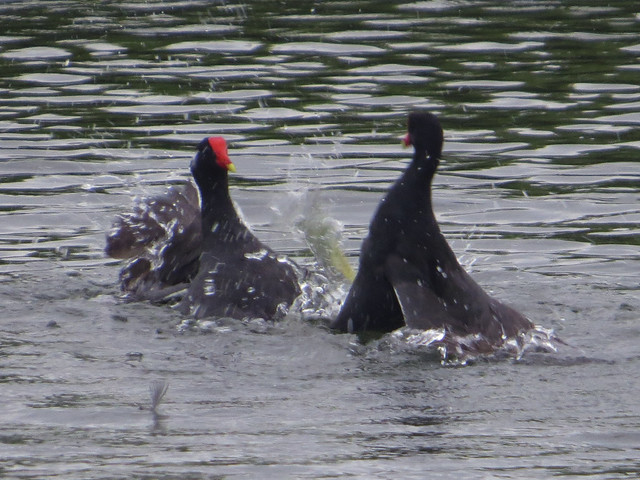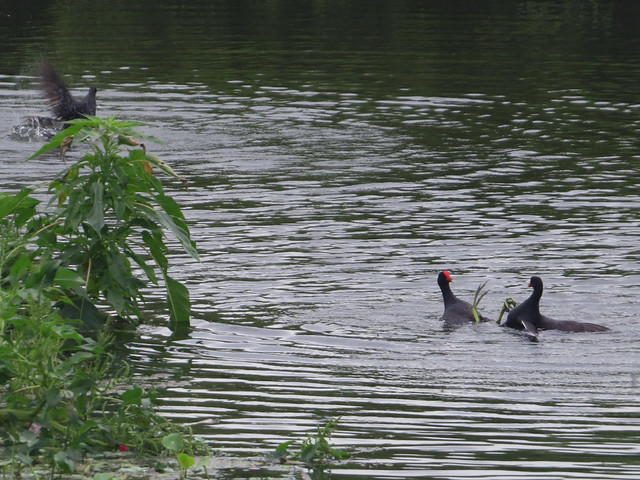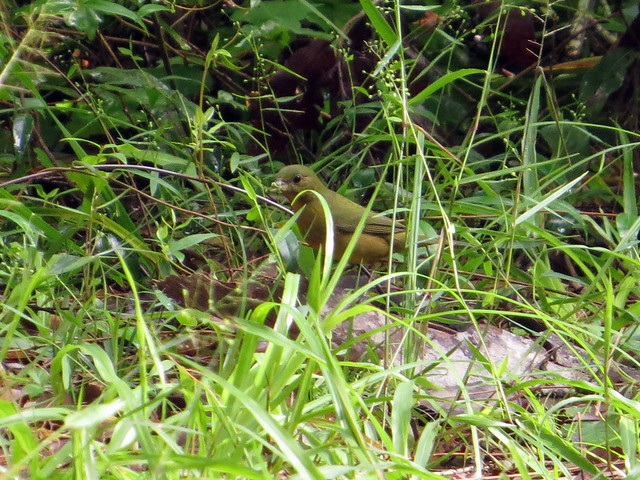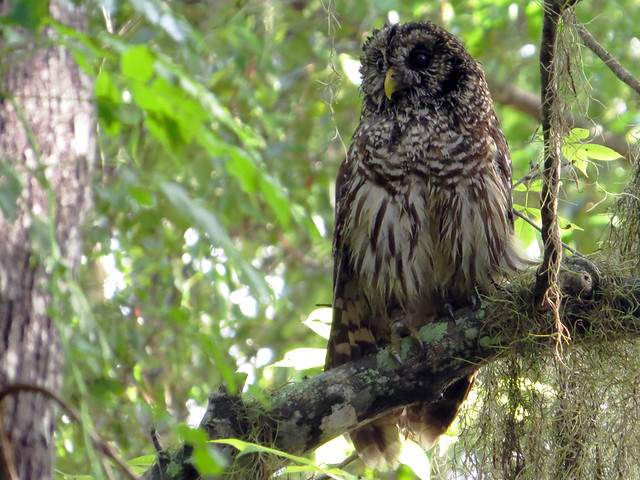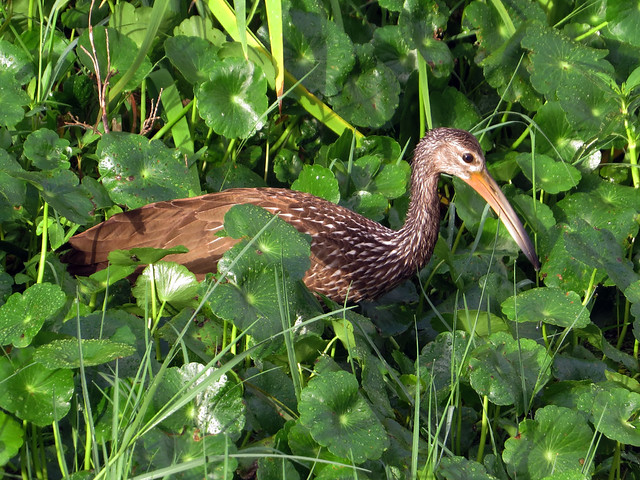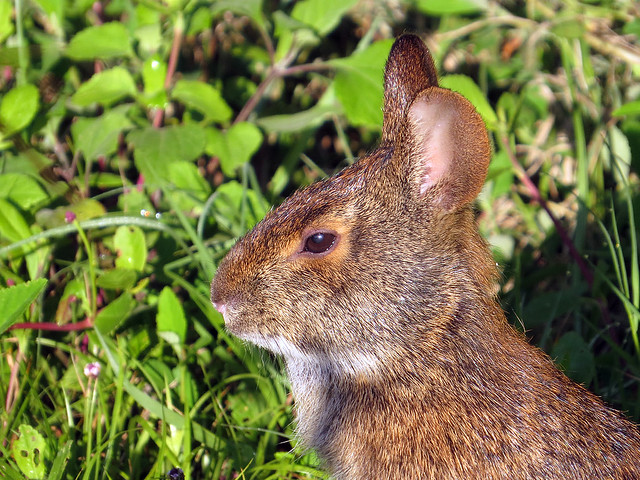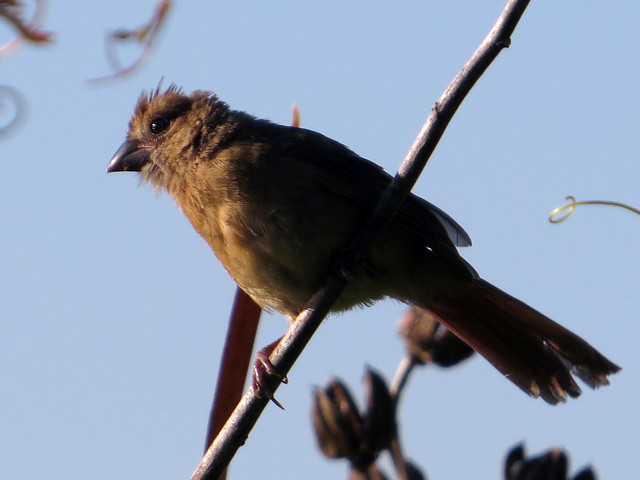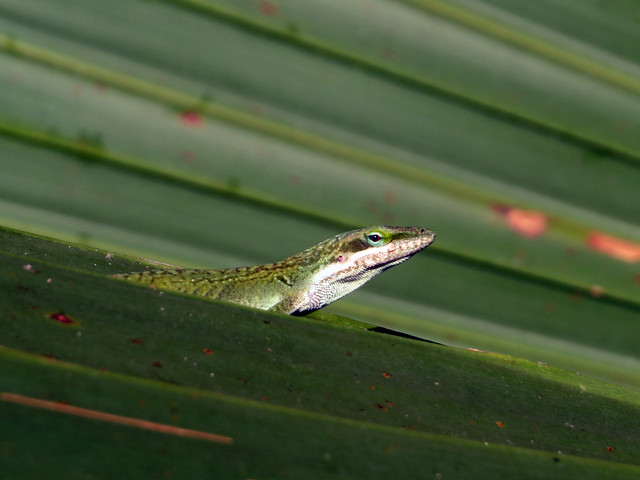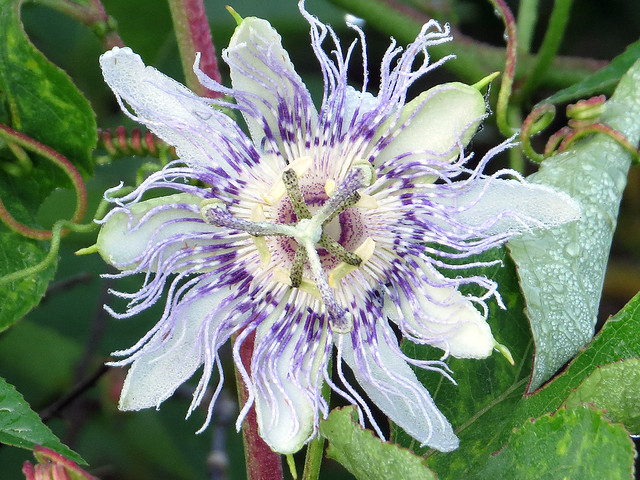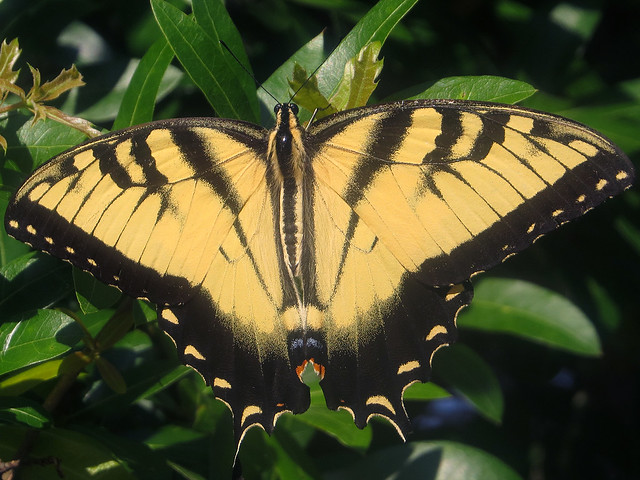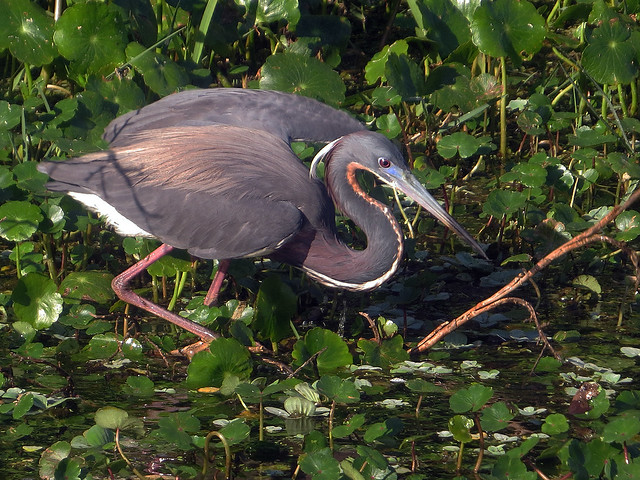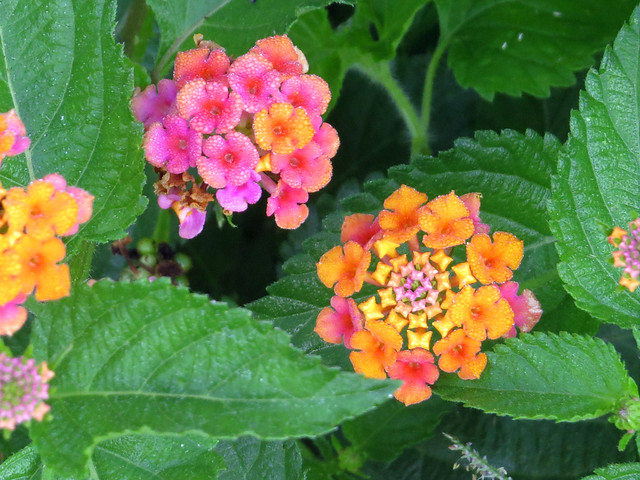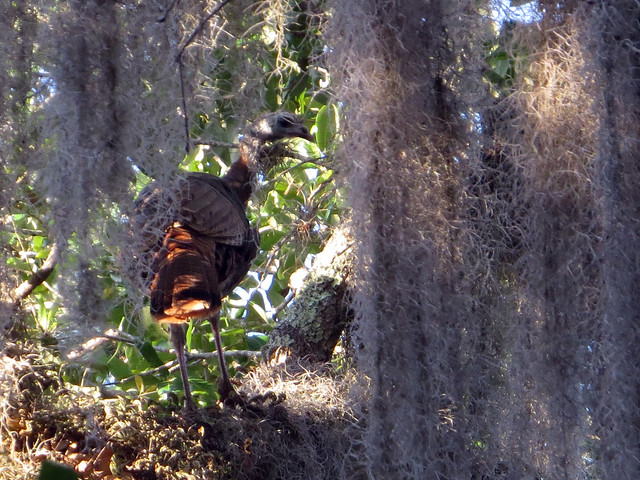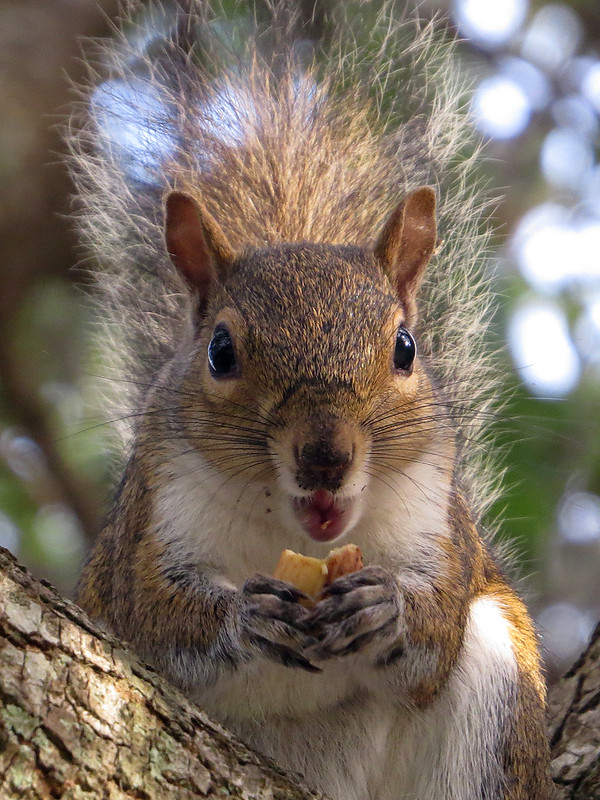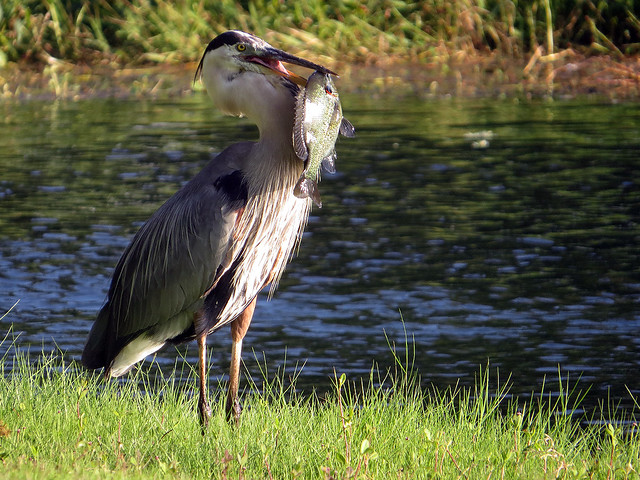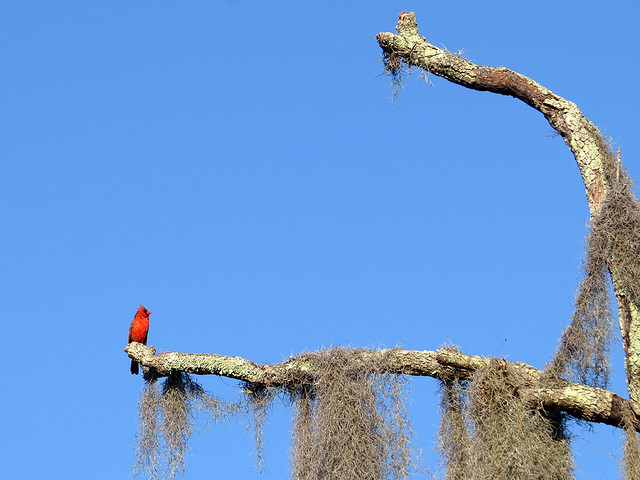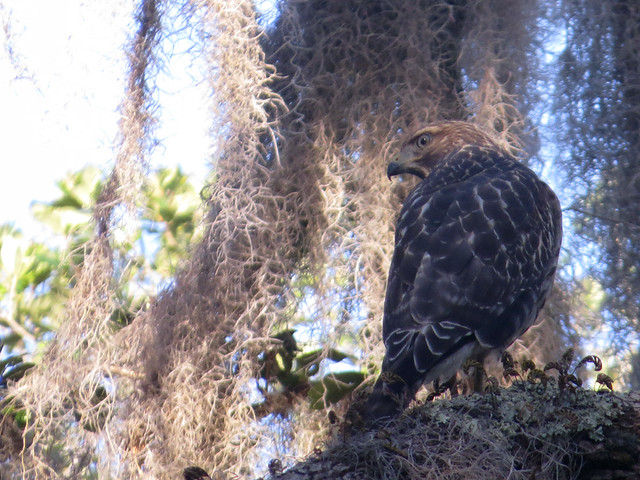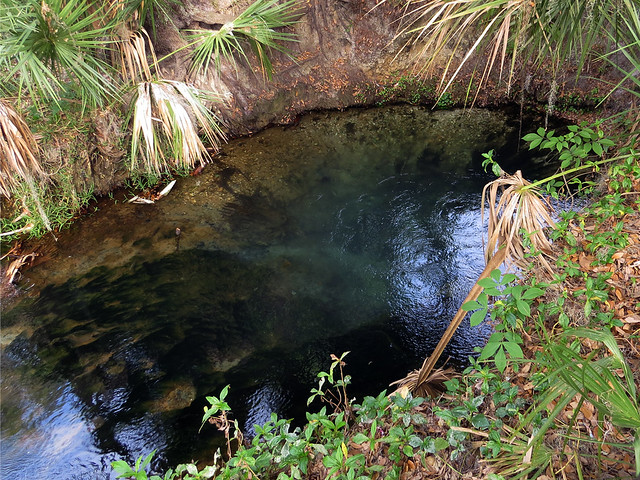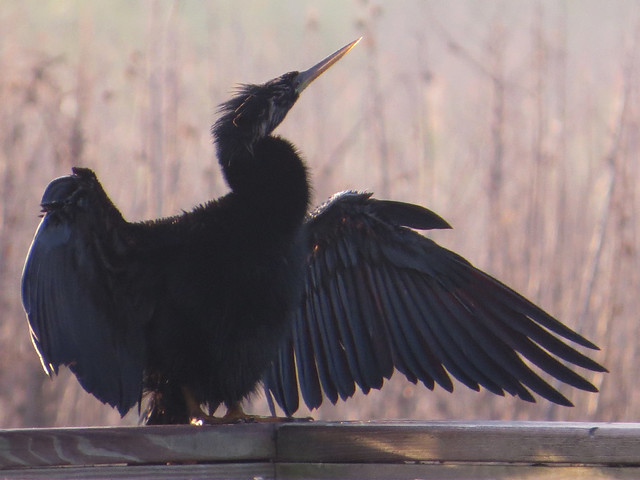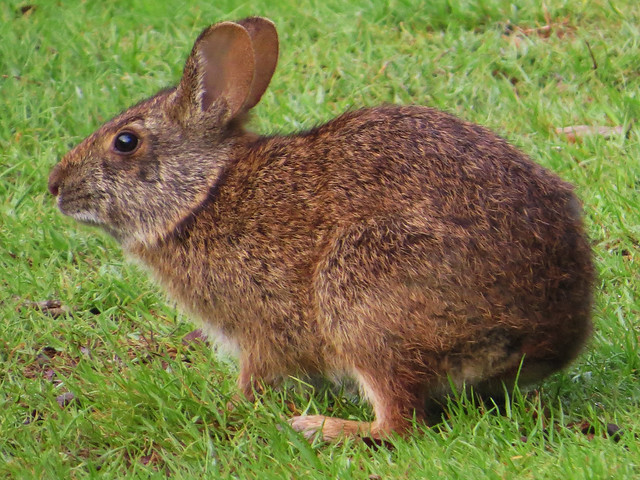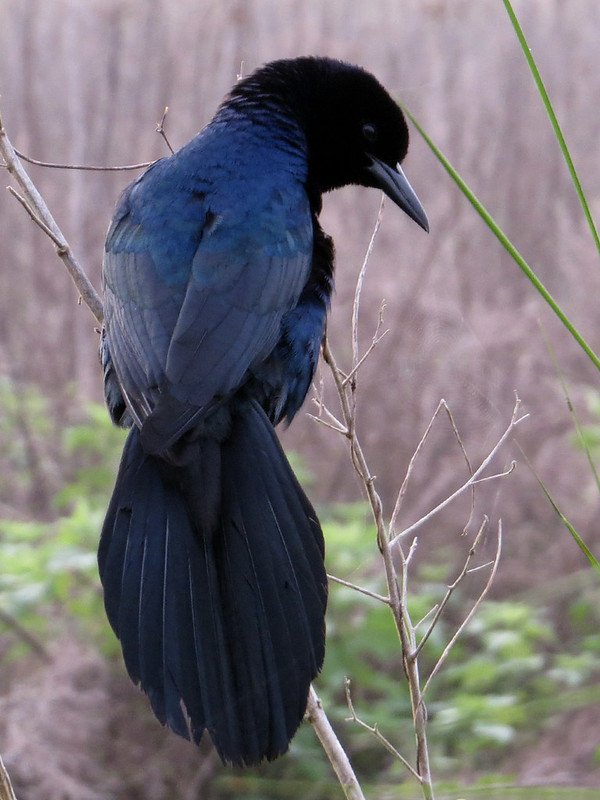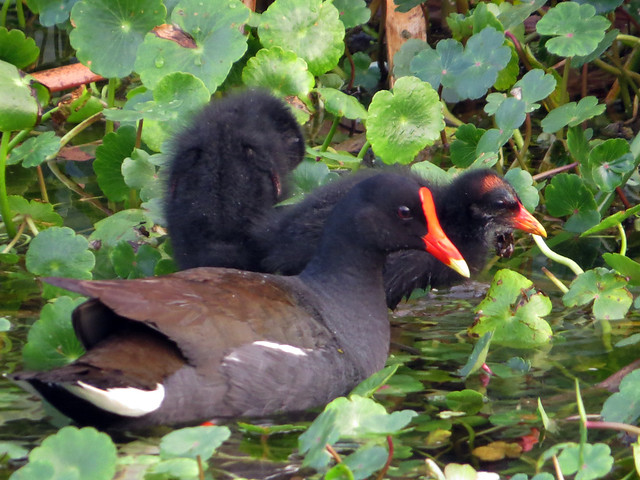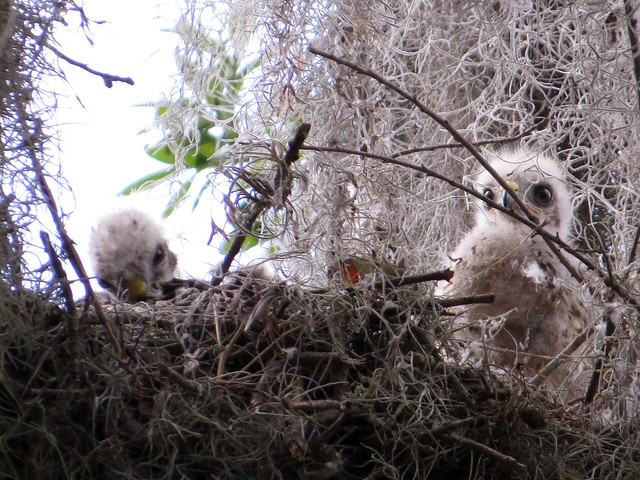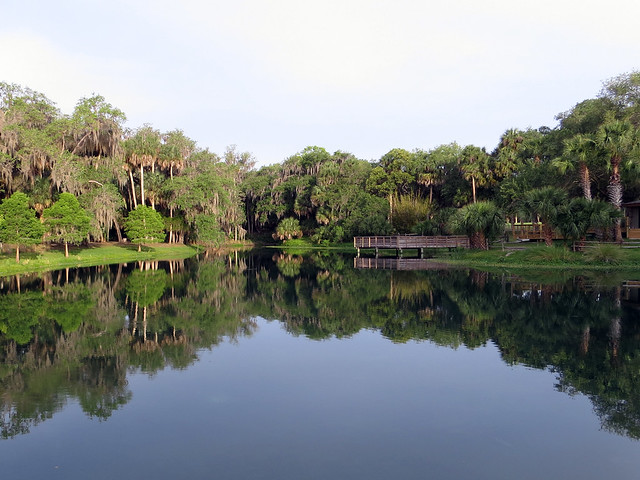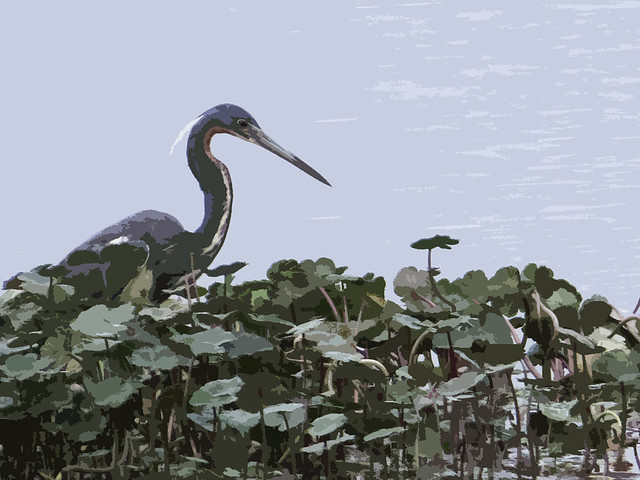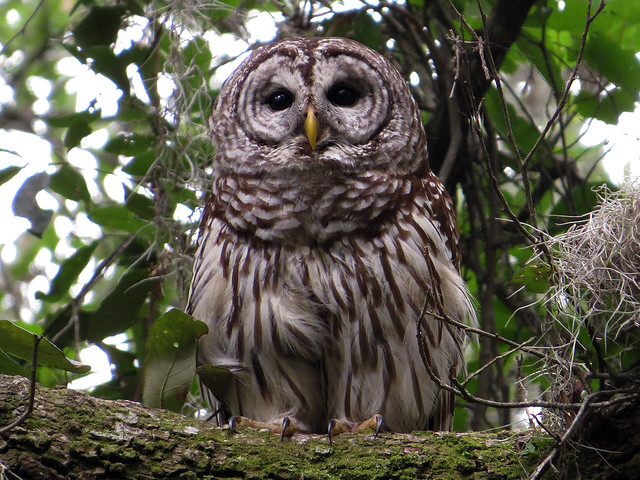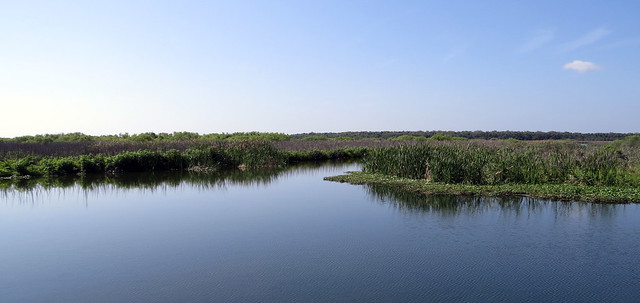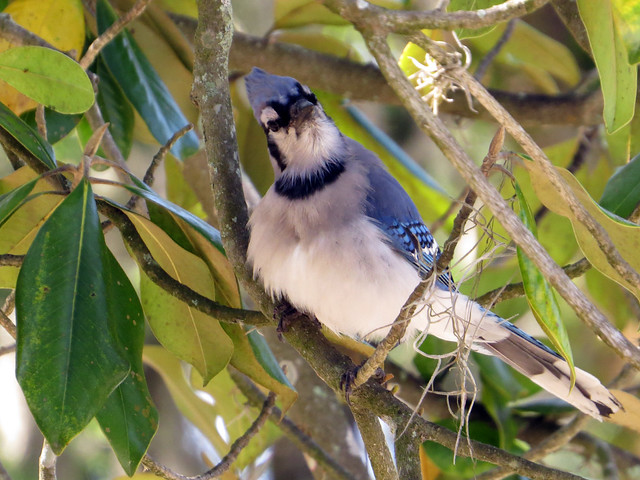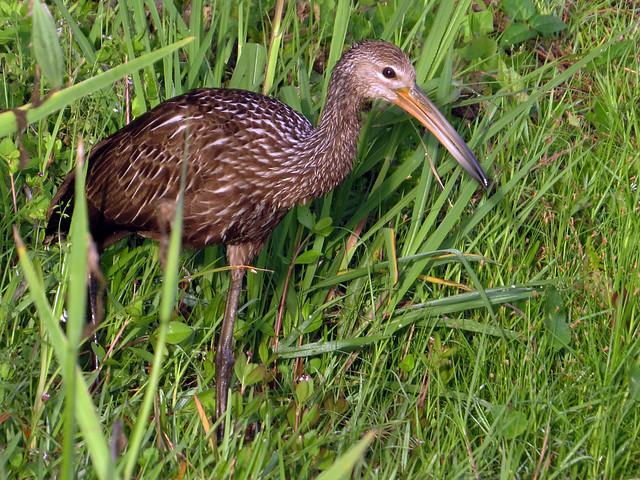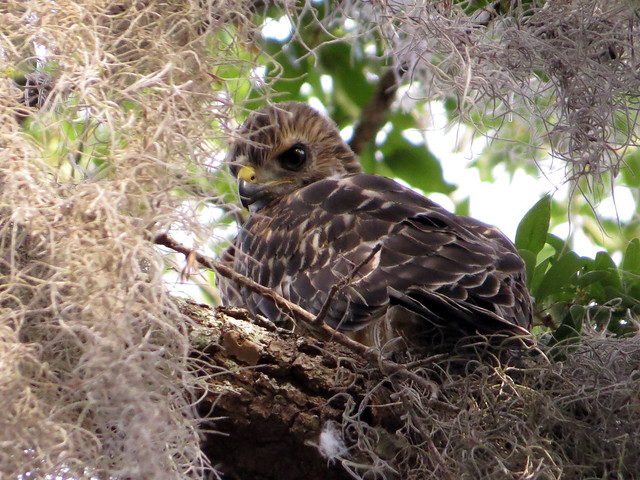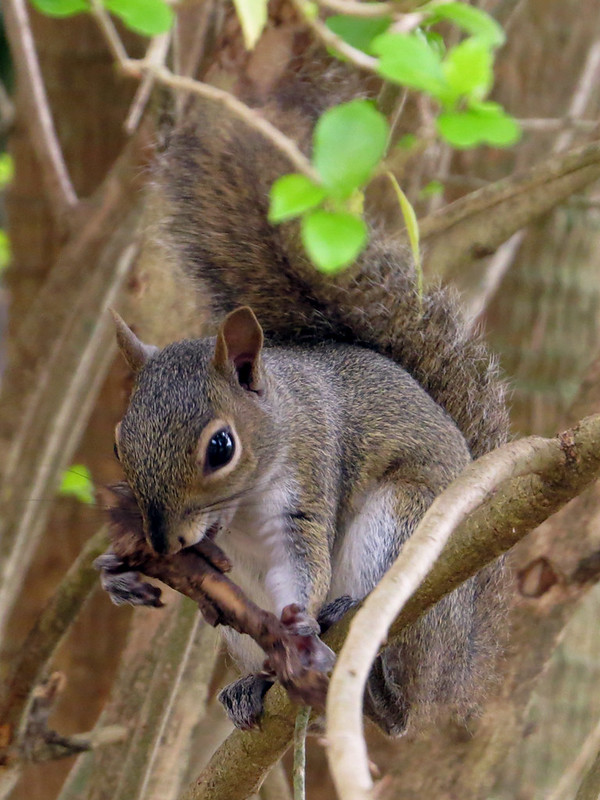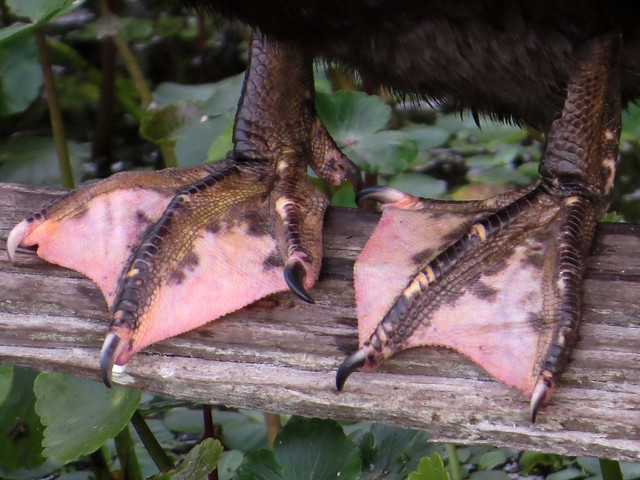Birding Gemini Springs, September 2013
I birded Gemini Springs 10 times in September, tallying 56 species. Last September I only saw 43 species in 9 trips. New for the year were Eastern Wood-Pewee, Veery, Swainson’s Thrush, Ovenbird, and Baltimore Oriole. The complete list is at the end of this post.
Here are some photographic highlights from a month of birding at Gemini Springs.
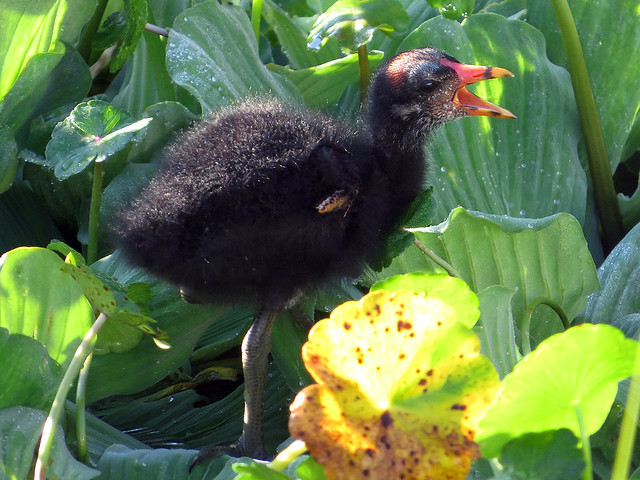
Common Gallinule chick | 02 September 2013
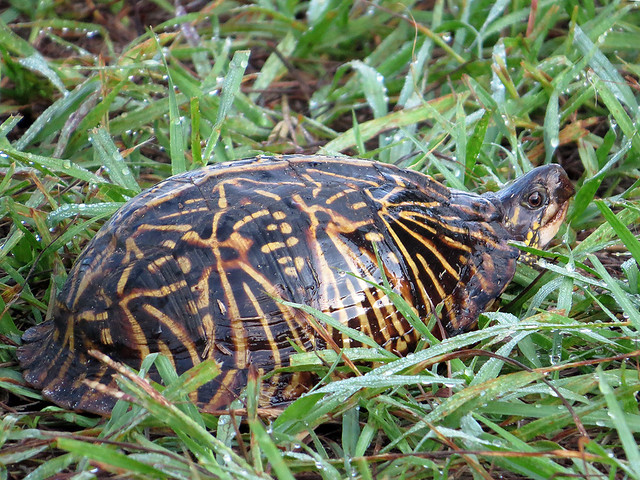
Florida Box Turtle | 06 September 2013
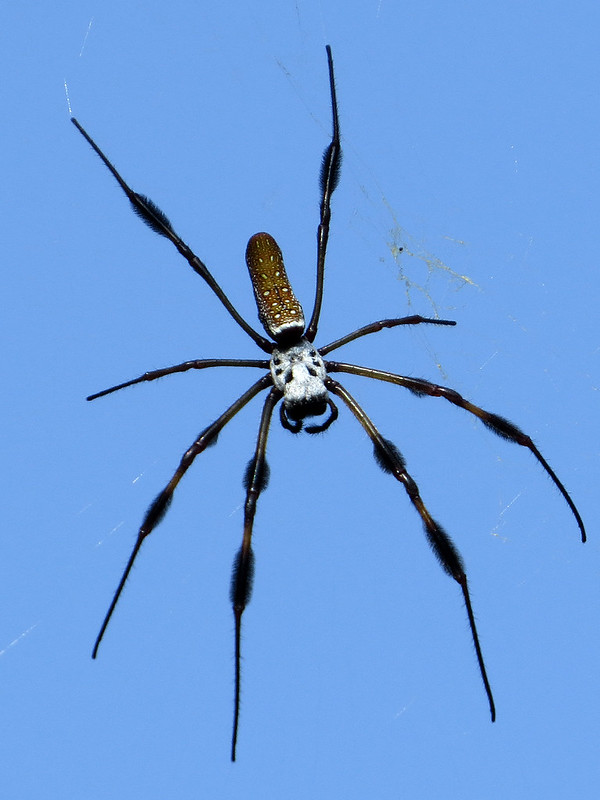
Golden Orb Weaver sp | 06 September 2013
With the cooler fall weather, Arthur and I biked the Spring-to-spring Trail a few evenings over the last month. On September 8th, we came across a runner who had stopped to photograph something off the path – a BOBCAT! Our first in the park (which is adjacent to the trail) and a new BIGBY species. Woo hoo!
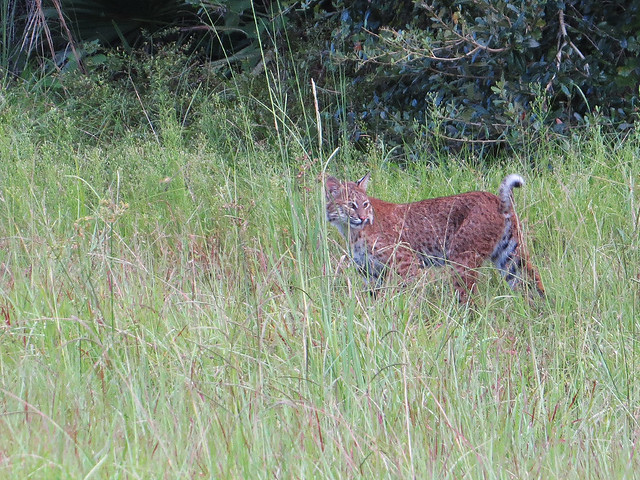
Bobcat | 08 September 2013
Naturally, we saw (but did not photograph) another one just two days later.
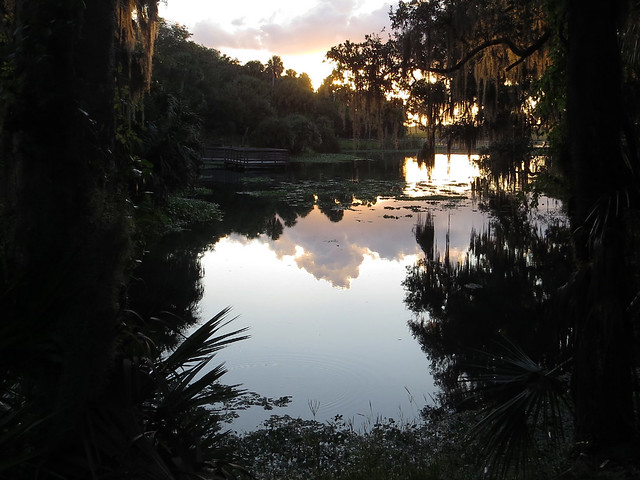
crisp morning | 10 September 2013
During another evening ride a few days later, we saw a family of feral pigs in the same area we saw the first bobcat. I’ve only seen pigs a couple of times before, always in a much more remote area of the park. The piglets are cute but the species is invasive and does a lot of habitat damage. Not good.
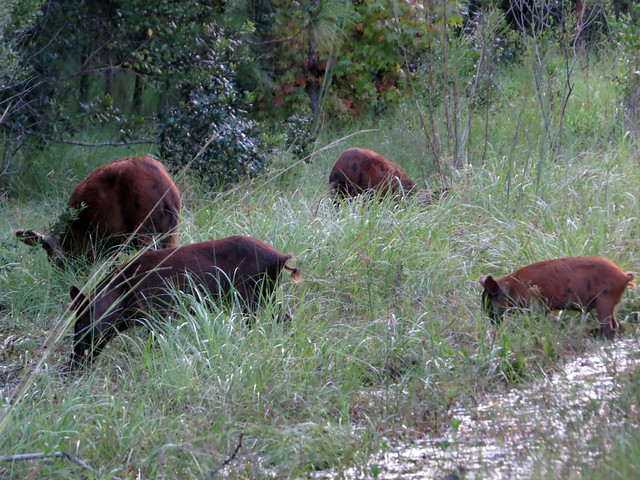
feral pigs | 11 September 2013
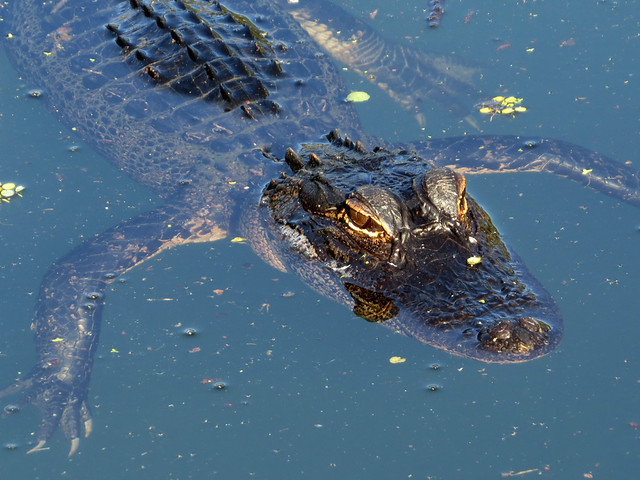
little gator | 13 September 2013
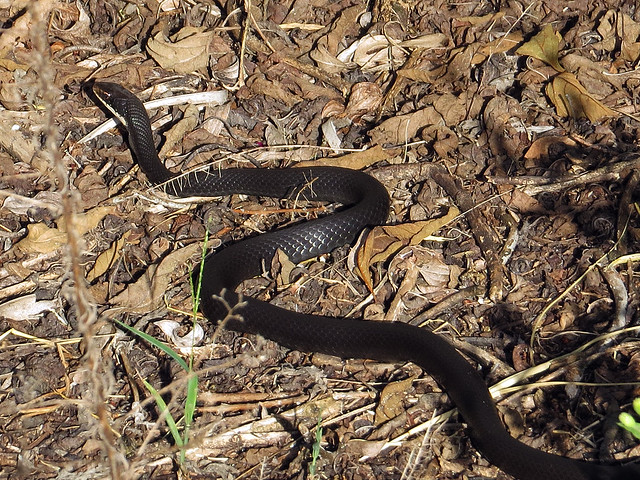
Southern Black Racer | 16 September 2013
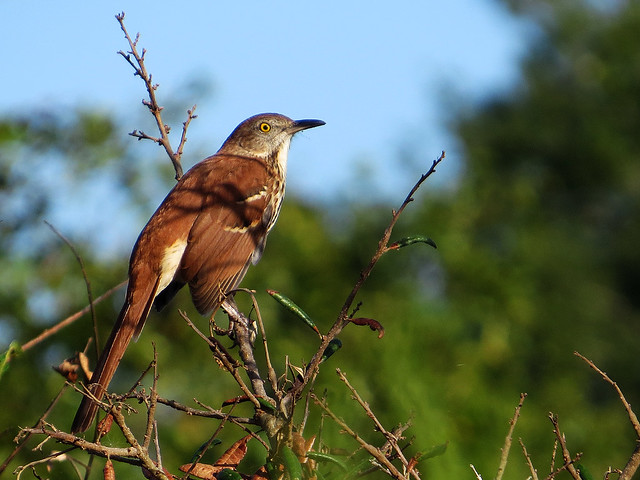
Brown Thrasher | 16 September 2013
During yet another evening bike ride, I was extremely thrilled to come across a Scarlet Kingsnake on the bike path right at the entrance to the park.

Lifer Scarlet Kingsnake — so beautiful!! | 18 September 2013
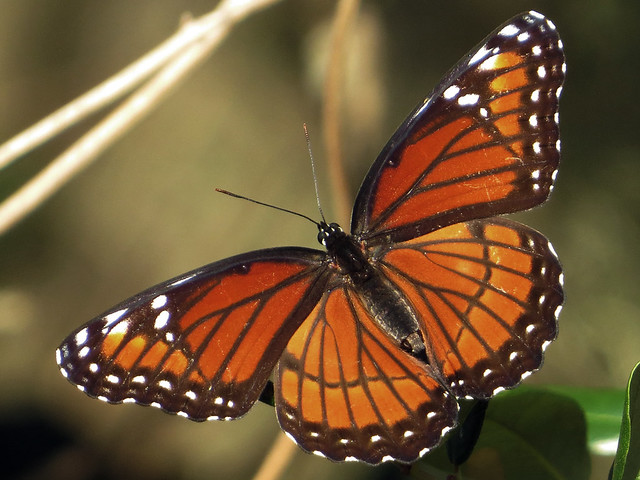
Viceroy | 20 September 2013
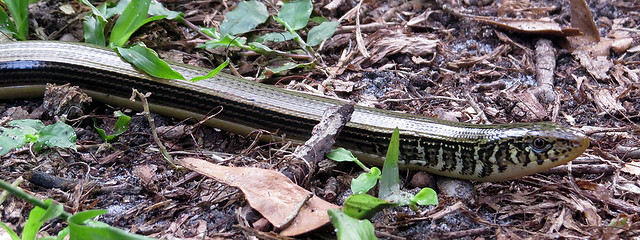
Eastern Glass Lizard | 22 September 2013
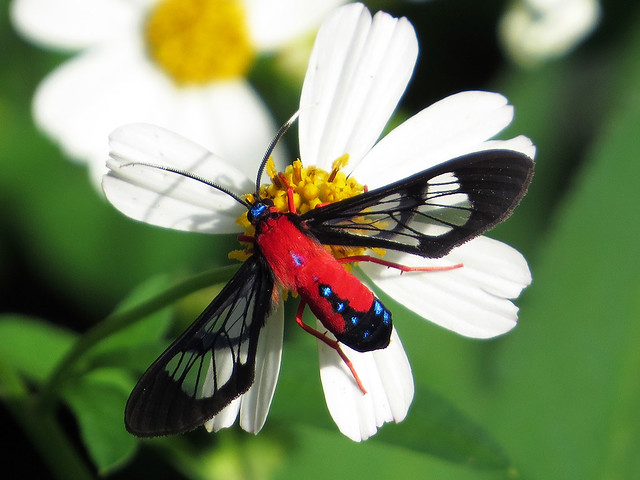
Scarlet-bodied Wasp Moth | 22 September 2013
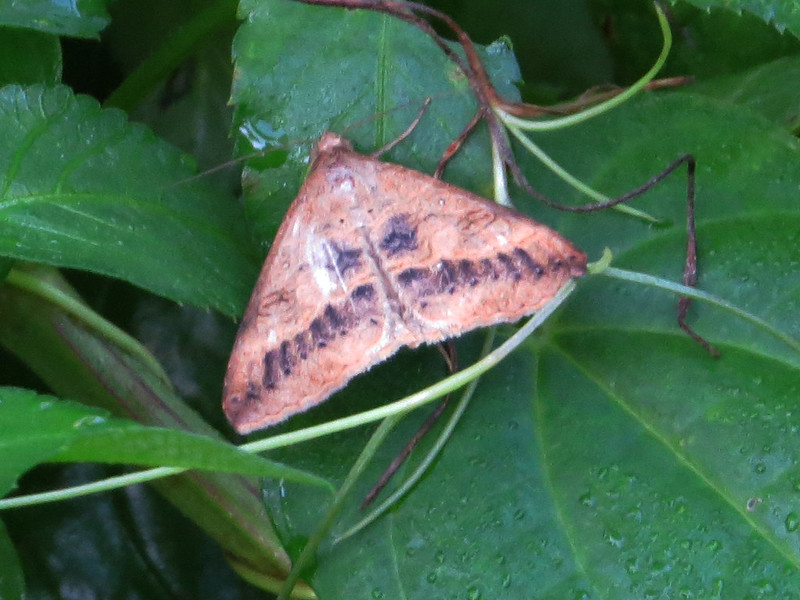
noctuidae sp | 29 September 2013
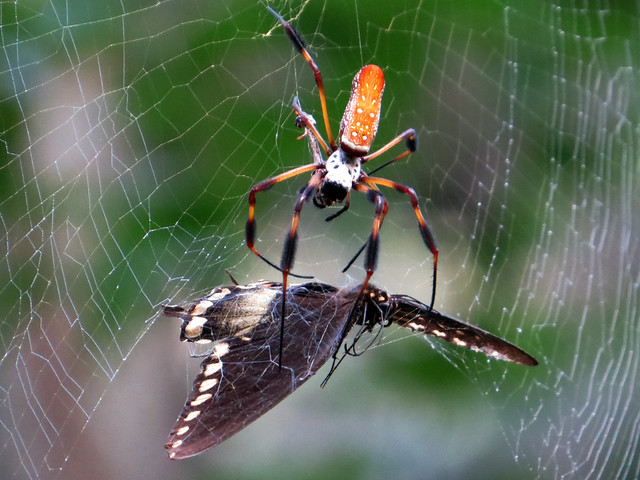
Golden Orb Weaver sp with swallowtailed-prey | 29 September 2013
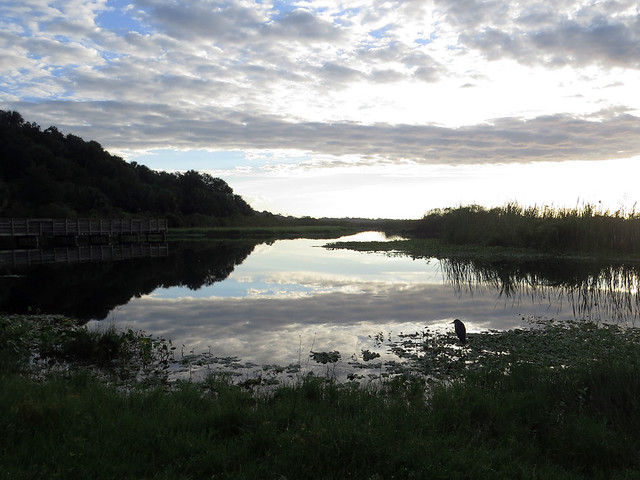
even crisper morning | 30 September 2013
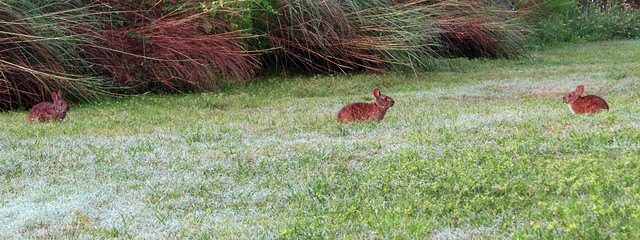
Marsh Rabbits | 30 September 2013
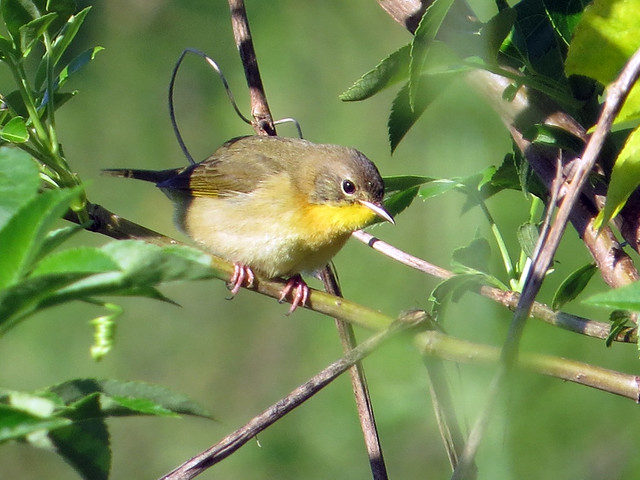
Common Yellowthroat | 30 September 2013
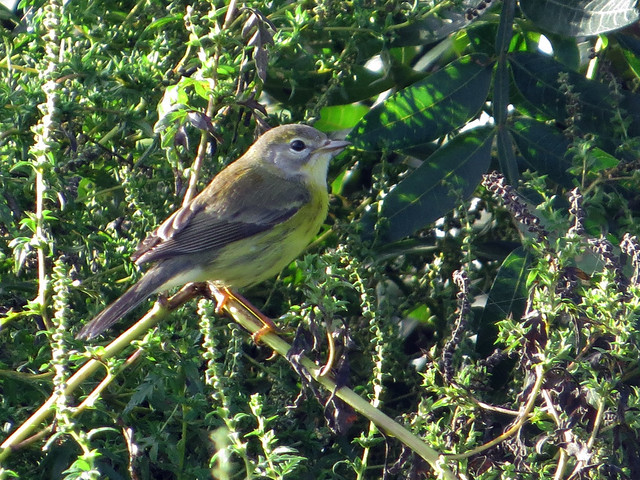
Prairie Warbler | 30 September 2013
If you are a fan of Gemini Springs, please consider becoming a Fan of Gemini Springs on Facebook!

September 2013 bird list, Gemini Springs
Muscovy Duck – Cairina moschata
Anhinga – Anhinga anhinga
Great Blue Heron – Ardea herodias
Great Egret – Ardea alba
Little Blue Heron – Egretta caerulea
Tricolored Heron – Egretta tricolor
Green Heron – Butorides virescens
Black Vulture – Coragyps atratus
Turkey Vulture – Cathartes aura
Cooper’s Hawk – Accipiter cooperii
Bald Eagle – Haliaeetus leucocephalus
Red-shouldered Hawk – Buteo lineatus
Common Gallinule – Gallinula galeata
American Coot – Fulica americana
Sandhill Crane – Grus canadensis
Mourning Dove – Zenaida macroura
Barred Owl – Strix varia
Chimney Swift – Chaetura pelagica
Ruby-throated Hummingbird – Archilochus colubris
Belted Kingfisher – Megaceryle alcyon
Red-bellied Woodpecker – Melanerpes carolinus
Downy Woodpecker – Picoides pubescens
Northern Flicker – Colaptes auratus
Pileated Woodpecker – Dryocopus pileatus
Eastern Wood-Pewee – Contopus virens
Great Crested Flycatcher – Myiarchus crinitus
Loggerhead Shrike – Lanius ludovicianus
White-eyed Vireo – Vireo griseus
Red-eyed Vireo – Vireo olivaceus
Blue Jay – Cyanocitta cristata
American Crow – Corvus brachyrhynchos
Fish Crow – Corvus ossifragus
Carolina Chickadee – Poecile carolinensis
Tufted Titmouse – Baeolophus bicolor
House Wren – Troglodytes aedon
Carolina Wren – Thryothorus ludovicianus
Blue-gray Gnatcatcher – Polioptila caerulea
Veery – Catharus fuscescens
Swainson’s Thrush – Catharus ustulatus
Gray Catbird – Dumetella carolinensis
Brown Thrasher – Toxostoma rufum
Northern Mockingbird – Mimus polyglottos
Ovenbird – Seiurus aurocapilla
Common Yellowthroat – Geothlypis trichas
American Redstart – Setophaga ruticilla
Northern Parula – Setophaga americana
Palm Warbler – Setophaga palmarum
Yellow-throated Warbler – Setophaga dominica
Prairie Warbler – Setophaga discolor
Eastern Towhee – Pipilo erythrophthalmus
Northern Cardinal – Cardinalis cardinalis
Indigo Bunting – Passerina cyanea
Red-winged Blackbird – Agelaius phoeniceus
Common Grackle – Quiscalus quiscula
Boat-tailed Grackle – Quiscalus major
Baltimore Oriole – Icterus galbula




